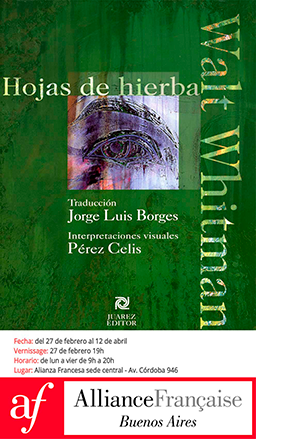LEYVA NOVO: DUST IT IS AND TO DUST IT WILL TURN
Intricate between action and register, El Apartamento hosts Algo deja quien se va, the first solo exhibition in Spain by Reynier Leyva Novo (Havana, Cuba, 1983). Starting from the political concept of historical memory and linking it to the issues of power and colonialism, the artist unfolds in two well-differentiated series his proposal to approach these lines, and extends his networks to the impact (or influence) they have on the institutional and cultural fabric.
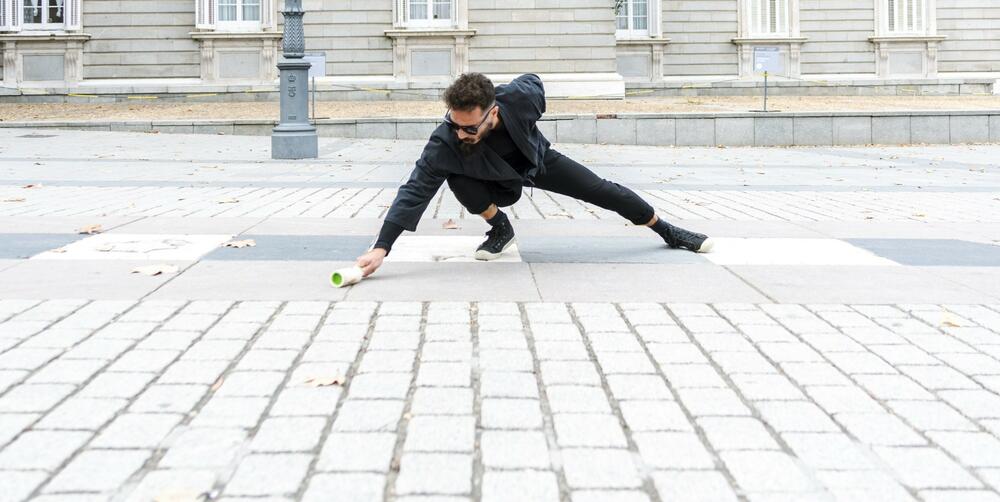
Both series, Global Active Dust Collection Center and El susurro de Mnemosine can find a common point in that omnipresent concern of a postcolonialism that vertebrates artistic practice. Specifically, the history of Spain and his native Cuba allow Reynier Leyva Novo to enter known fields and use them not only as a stage for the memory he alludes to, but also as a reminder and record of a present that maintains its essence in the everydayness of the public space.
The action behind the Global Active Dust Collection Center is not new. Initiated by the artist in Washington, the Cuban artist tests in a second city the search and discovery of the essence and contextual meaning in the memory of architecture, urbanism and the development of the city itself. All of them are witnesses of the different looks, inert beings that, nevertheless, hide in them and in their surroundings, semiotics of power and decadence.
-
Reynier Leyva Novo. Algo deja quien se va. Foto: Álvaro de Benito
-
Reynier Leyva Novo. Algo deja quien se va. Foto: Álvaro de Benito
-
Reynier Leyva Novo. Algo deja quien se va. Foto: Álvaro de Benito
-
Reynier Leyva Novo. Algo deja quien se va. Foto: Álvaro de Benito
-
Reynier Leyva Novo. Algo deja quien se va. Foto: Álvaro de Benito
-
Reynier Leyva Novo. Algo deja quien se va. Foto: Álvaro de Benito
-
Reynier Leyva Novo. Algo deja quien se va. Foto: Álvaro de Benito
In a performative action, Leyva Novo will sublimate that essence by collecting on adhesive tapes the remains that make up the pavement of these landmarks in the historical metropolis, which will make everything that exists around them take on an essence of its own as a real record. The result is astonishing for its pictorial quality, a sample of random harmony of living elements that maintain, like the processes, their calendar. Leaves, ribbons, grasses and everyday elements are the protagonists of memory and of a present that, captured in the moment, will also tend to get lost organically in its fragility.
On the other hand, the exhibition presents El susurro de Mnemosine, a second series that connects and is linked to the Global Active Dust Collection Center for its research on that Cuban colonial memory, but which claims its full aesthetic independence. In it, the artist represents some of the best-known or significant memorials that raise the memory of the episodes of struggle, incorporating the factor of the hero, full symbolism to address, from that point, a certain criticism that affects more on the symbolic and almost museistic of those figures. From there, he will duplicate the work to bury them under opaque layers of paint and that will only acquire institutional sense when their peers are revealed with conservation and restoration techniques.
Reynier Leyva Novo: Algo deja quien se va can be seen until May 1 at El Apartamento (Madrid headquarters9, Puebla, 4, Madrid (Spain).
Related Topics
May interest you
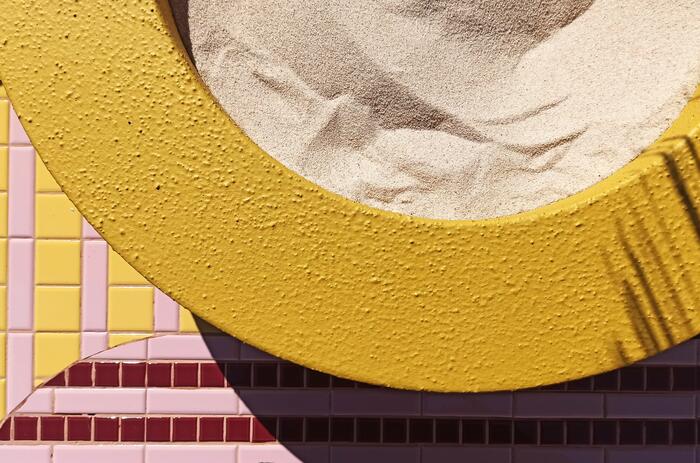
The intervention Wasi Llamkha (Place and touch), by artist Andrea Canepa (Lima, Peru, 1980), stands on the South Patio of Madrid's Condeduque. This pavilion, designed as an ephemeral architectural structure, invites us to explore its sensorial value, far from the preeminence of the visual, and claims, by way of inspiration, the quipus, the forms of representation and recording of information from pre-Columbian Peru.
SPACE AND SENSES IN ANDREA CANEPA
The intervention Wasi Llamkha (Place and touch), by artist Andrea Canepa (Lima, Peru, 1980), stands on the South Patio of Madrid's Condeduque. This pavilion, designed as an ephemeral architectural structure, invites us to explore its sensorial value, far from the preeminence of the visual, and claims, by way of inspiration, the quipus, the forms of representation and recording of information from pre-Columbian Peru.

The intervention Wasi Llamkha (Place and touch), by artist Andrea Canepa (Lima, Peru, 1980), stands on the South Patio of Madrid's Condeduque. This pavilion, designed as an ephemeral architectural structure, invites us to explore its sensorial value, far from the preeminence of the visual, and claims, by way of inspiration, the quipus, the forms of representation and recording of information from pre-Columbian Peru.
SPACE AND SENSES IN ANDREA CANEPA
The intervention Wasi Llamkha (Place and touch), by artist Andrea Canepa (Lima, Peru, 1980), stands on the South Patio of Madrid's Condeduque. This pavilion, designed as an ephemeral architectural structure, invites us to explore its sensorial value, far from the preeminence of the visual, and claims, by way of inspiration, the quipus, the forms of representation and recording of information from pre-Columbian Peru.
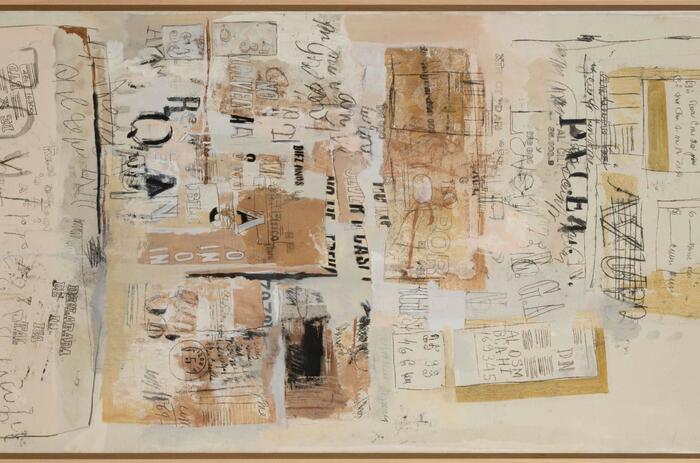
Madrid-based Maisterravalbuena proposes a vindication of the work of Sarah Grilo (Buenos Aires, Argentina,1917 - Madrid, Spain, 2007) through Soluciones para pensar, the second exhibition on this artist at the gallery. With a didactic and rediscovery vocation, the exhibition gathers a selection of paintings in different formats made between the 1960s and 1990s, many of them unpublished to the public. This work of selection and direct work of the gallery with the archive and the legacy of the Argentinean artist becomes fundamental in the structuring of the objective of creating opportunities for a greater knowledge of Grilo's work.
(RE)DISCOVERING SARAH GRILO AT MAISTERRAVALBUENA
Madrid-based Maisterravalbuena proposes a vindication of the work of Sarah Grilo (Buenos Aires, Argentina,1917 - Madrid, Spain, 2007) through Soluciones para pensar, the second exhibition on this artist at the gallery. With a didactic and rediscovery vocation, the exhibition gathers a selection of paintings in different formats made between the 1960s and 1990s, many of them unpublished to the public. This work of selection and direct work of the gallery with the archive and the legacy of the Argentinean artist becomes fundamental in the structuring of the objective of creating opportunities for a greater knowledge of Grilo's work.
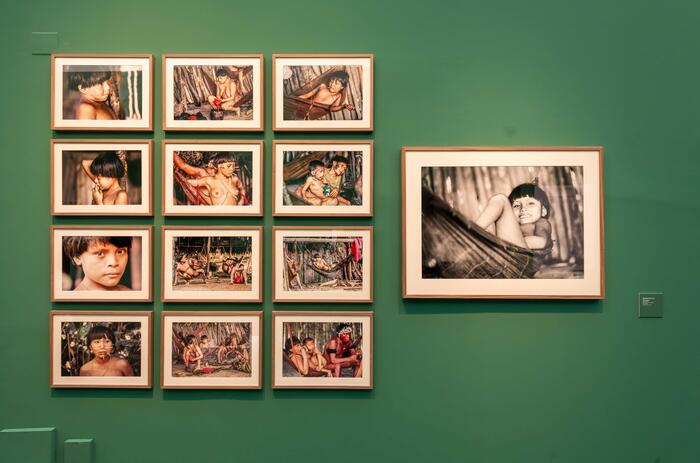
Madrid's CentroCentro approaches the artistic production related to the Amazon with the exhibition Trópico sin tópico: Amazonas (Tropic without Topic: Amazon), curated by Halim Badawi (Barranquilla, Colombia, 1982), and with which it intends to facilitate new looks beyond the usual ones with which the European imaginary contemplates the indigenous legacy and its relation with the contemporary world.
THE REVERSION OF AMAZONIAN CLICHÉS AT CENTROCENTRO
Madrid's CentroCentro approaches the artistic production related to the Amazon with the exhibition Trópico sin tópico: Amazonas (Tropic without Topic: Amazon), curated by Halim Badawi (Barranquilla, Colombia, 1982), and with which it intends to facilitate new looks beyond the usual ones with which the European imaginary contemplates the indigenous legacy and its relation with the contemporary world.

The Hochschild Correa Collection boasts of being the most complete private collection of contemporary art from the Peruvian Amazon. Nevertheless, for more than a decade, it has been built on a varied and unrestricted collection, which has made it possible to bring together the different trends and techniques currently being used in the region, with a focus on dialogue and a certain relational patina among the works that make up the collection.
PERUVIAN AMAZONIAN ART THROUGH THE HOCHSCHILD CORREA COLLECTION
The Hochschild Correa Collection boasts of being the most complete private collection of contemporary art from the Peruvian Amazon. Nevertheless, for more than a decade, it has been built on a varied and unrestricted collection, which has made it possible to bring together the different trends and techniques currently being used in the region, with a focus on dialogue and a certain relational patina among the works that make up the collection.
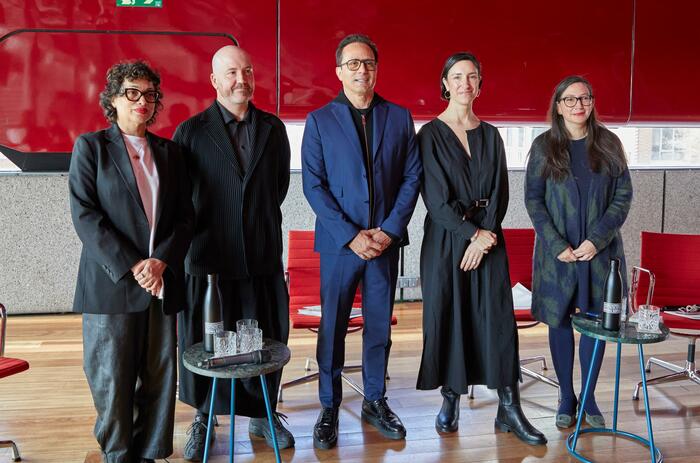
Madrid's Reina Sofia Museum, in collaboration with the Reina Sofia Museum Foundation, reinforces its growing involvement and strategy for the dissemination and study of Latin American contemporary art with the creation of the Cáder Institute of Central American Art (ICAC), dedicated to the research and dissemination of Central American art.
THE CENTRAL AMERICAN ART INSTITUTE (ICAC) OF THE REINA SOFIA MUSEUM IS BORN
Madrid's Reina Sofia Museum, in collaboration with the Reina Sofia Museum Foundation, reinforces its growing involvement and strategy for the dissemination and study of Latin American contemporary art with the creation of the Cáder Institute of Central American Art (ICAC), dedicated to the research and dissemination of Central American art.
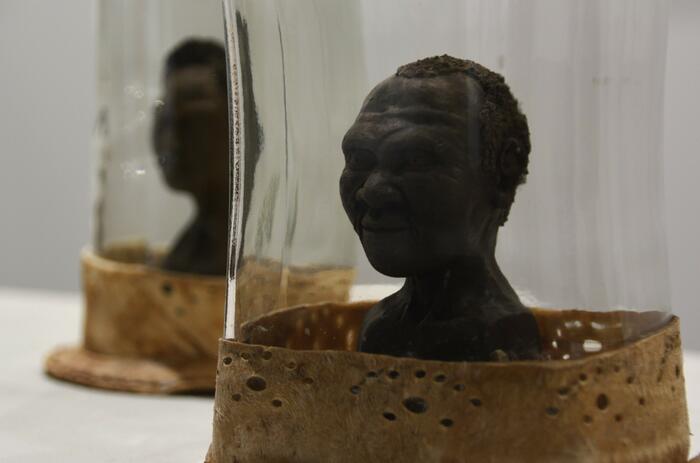
The organization has entrusted Mexican curator José Esparza Chong Cuy with the development of Perfiles | Arte latinoamericano, a curated journey that highlights, through ten selected figures, the diversity of visual approaches. As the curator himself states, it offers "a broad panorama of how to identify as artists and build community, proposing new ways of making, thinking, and living together."
THE LATIN AMERICAN GAZE IN ARCO’S “PROFILES” PROGRAM
The organization has entrusted Mexican curator José Esparza Chong Cuy with the development of Perfiles | Arte latinoamericano, a curated journey that highlights, through ten selected figures, the diversity of visual approaches. As the curator himself states, it offers "a broad panorama of how to identify as artists and build community, proposing new ways of making, thinking, and living together."
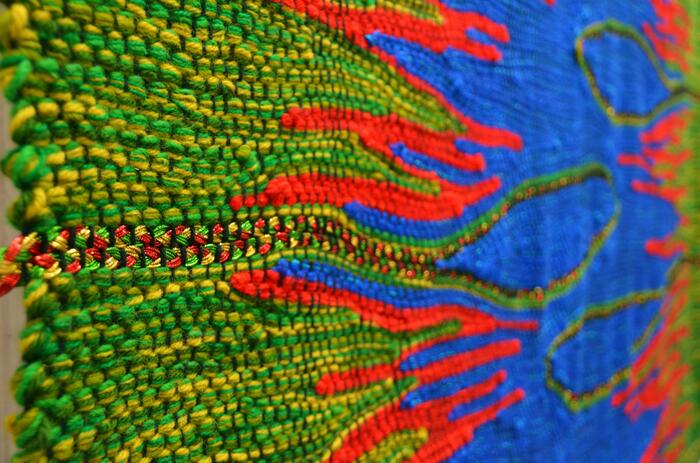
The Latin American presence at ARCO is consolidating year after year, establishing itself as a primary guiding thread beyond market trends, becoming a significant part of the identity of the Madrid fair. In this sense, the participating galleries in the various programs showcase well-established names as well as younger or more radical bets, shaping an ecosystem in which various productions can be analyzed.
ARCO 2025: DIFFERENT VIEWS ON LATIN AMERICA
The Latin American presence at ARCO is consolidating year after year, establishing itself as a primary guiding thread beyond market trends, becoming a significant part of the identity of the Madrid fair. In this sense, the participating galleries in the various programs showcase well-established names as well as younger or more radical bets, shaping an ecosystem in which various productions can be analyzed.

The intervention Wasi Llamkha (Place and touch), by artist Andrea Canepa (Lima, Peru, 1980), stands on the South Patio of Madrid's Condeduque. This pavilion, designed as an ephemeral architectural structure, invites us to explore its sensorial value, far from the preeminence of the visual, and claims, by way of inspiration, the quipus, the forms of representation and recording of information from pre-Columbian Peru.
SPACE AND SENSES IN ANDREA CANEPA
The intervention Wasi Llamkha (Place and touch), by artist Andrea Canepa (Lima, Peru, 1980), stands on the South Patio of Madrid's Condeduque. This pavilion, designed as an ephemeral architectural structure, invites us to explore its sensorial value, far from the preeminence of the visual, and claims, by way of inspiration, the quipus, the forms of representation and recording of information from pre-Columbian Peru.

Madrid-based Maisterravalbuena proposes a vindication of the work of Sarah Grilo (Buenos Aires, Argentina,1917 - Madrid, Spain, 2007) through Soluciones para pensar, the second exhibition on this artist at the gallery. With a didactic and rediscovery vocation, the exhibition gathers a selection of paintings in different formats made between the 1960s and 1990s, many of them unpublished to the public. This work of selection and direct work of the gallery with the archive and the legacy of the Argentinean artist becomes fundamental in the structuring of the objective of creating opportunities for a greater knowledge of Grilo's work.
(RE)DISCOVERING SARAH GRILO AT MAISTERRAVALBUENA
Madrid-based Maisterravalbuena proposes a vindication of the work of Sarah Grilo (Buenos Aires, Argentina,1917 - Madrid, Spain, 2007) through Soluciones para pensar, the second exhibition on this artist at the gallery. With a didactic and rediscovery vocation, the exhibition gathers a selection of paintings in different formats made between the 1960s and 1990s, many of them unpublished to the public. This work of selection and direct work of the gallery with the archive and the legacy of the Argentinean artist becomes fundamental in the structuring of the objective of creating opportunities for a greater knowledge of Grilo's work.

Madrid's CentroCentro approaches the artistic production related to the Amazon with the exhibition Trópico sin tópico: Amazonas (Tropic without Topic: Amazon), curated by Halim Badawi (Barranquilla, Colombia, 1982), and with which it intends to facilitate new looks beyond the usual ones with which the European imaginary contemplates the indigenous legacy and its relation with the contemporary world.
THE REVERSION OF AMAZONIAN CLICHÉS AT CENTROCENTRO
Madrid's CentroCentro approaches the artistic production related to the Amazon with the exhibition Trópico sin tópico: Amazonas (Tropic without Topic: Amazon), curated by Halim Badawi (Barranquilla, Colombia, 1982), and with which it intends to facilitate new looks beyond the usual ones with which the European imaginary contemplates the indigenous legacy and its relation with the contemporary world.

The Hochschild Correa Collection boasts of being the most complete private collection of contemporary art from the Peruvian Amazon. Nevertheless, for more than a decade, it has been built on a varied and unrestricted collection, which has made it possible to bring together the different trends and techniques currently being used in the region, with a focus on dialogue and a certain relational patina among the works that make up the collection.
PERUVIAN AMAZONIAN ART THROUGH THE HOCHSCHILD CORREA COLLECTION
The Hochschild Correa Collection boasts of being the most complete private collection of contemporary art from the Peruvian Amazon. Nevertheless, for more than a decade, it has been built on a varied and unrestricted collection, which has made it possible to bring together the different trends and techniques currently being used in the region, with a focus on dialogue and a certain relational patina among the works that make up the collection.

Madrid's Reina Sofia Museum, in collaboration with the Reina Sofia Museum Foundation, reinforces its growing involvement and strategy for the dissemination and study of Latin American contemporary art with the creation of the Cáder Institute of Central American Art (ICAC), dedicated to the research and dissemination of Central American art.
THE CENTRAL AMERICAN ART INSTITUTE (ICAC) OF THE REINA SOFIA MUSEUM IS BORN
Madrid's Reina Sofia Museum, in collaboration with the Reina Sofia Museum Foundation, reinforces its growing involvement and strategy for the dissemination and study of Latin American contemporary art with the creation of the Cáder Institute of Central American Art (ICAC), dedicated to the research and dissemination of Central American art.

The organization has entrusted Mexican curator José Esparza Chong Cuy with the development of Perfiles | Arte latinoamericano, a curated journey that highlights, through ten selected figures, the diversity of visual approaches. As the curator himself states, it offers "a broad panorama of how to identify as artists and build community, proposing new ways of making, thinking, and living together."
THE LATIN AMERICAN GAZE IN ARCO’S “PROFILES” PROGRAM
The organization has entrusted Mexican curator José Esparza Chong Cuy with the development of Perfiles | Arte latinoamericano, a curated journey that highlights, through ten selected figures, the diversity of visual approaches. As the curator himself states, it offers "a broad panorama of how to identify as artists and build community, proposing new ways of making, thinking, and living together."

The Latin American presence at ARCO is consolidating year after year, establishing itself as a primary guiding thread beyond market trends, becoming a significant part of the identity of the Madrid fair. In this sense, the participating galleries in the various programs showcase well-established names as well as younger or more radical bets, shaping an ecosystem in which various productions can be analyzed.
ARCO 2025: DIFFERENT VIEWS ON LATIN AMERICA
The Latin American presence at ARCO is consolidating year after year, establishing itself as a primary guiding thread beyond market trends, becoming a significant part of the identity of the Madrid fair. In this sense, the participating galleries in the various programs showcase well-established names as well as younger or more radical bets, shaping an ecosystem in which various productions can be analyzed.

The intervention Wasi Llamkha (Place and touch), by artist Andrea Canepa (Lima, Peru, 1980), stands on the South Patio of Madrid's Condeduque. This pavilion, designed as an ephemeral architectural structure, invites us to explore its sensorial value, far from the preeminence of the visual, and claims, by way of inspiration, the quipus, the forms of representation and recording of information from pre-Columbian Peru.
SPACE AND SENSES IN ANDREA CANEPA
The intervention Wasi Llamkha (Place and touch), by artist Andrea Canepa (Lima, Peru, 1980), stands on the South Patio of Madrid's Condeduque. This pavilion, designed as an ephemeral architectural structure, invites us to explore its sensorial value, far from the preeminence of the visual, and claims, by way of inspiration, the quipus, the forms of representation and recording of information from pre-Columbian Peru.

Madrid-based Maisterravalbuena proposes a vindication of the work of Sarah Grilo (Buenos Aires, Argentina,1917 - Madrid, Spain, 2007) through Soluciones para pensar, the second exhibition on this artist at the gallery. With a didactic and rediscovery vocation, the exhibition gathers a selection of paintings in different formats made between the 1960s and 1990s, many of them unpublished to the public. This work of selection and direct work of the gallery with the archive and the legacy of the Argentinean artist becomes fundamental in the structuring of the objective of creating opportunities for a greater knowledge of Grilo's work.
(RE)DISCOVERING SARAH GRILO AT MAISTERRAVALBUENA
Madrid-based Maisterravalbuena proposes a vindication of the work of Sarah Grilo (Buenos Aires, Argentina,1917 - Madrid, Spain, 2007) through Soluciones para pensar, the second exhibition on this artist at the gallery. With a didactic and rediscovery vocation, the exhibition gathers a selection of paintings in different formats made between the 1960s and 1990s, many of them unpublished to the public. This work of selection and direct work of the gallery with the archive and the legacy of the Argentinean artist becomes fundamental in the structuring of the objective of creating opportunities for a greater knowledge of Grilo's work.

Madrid's CentroCentro approaches the artistic production related to the Amazon with the exhibition Trópico sin tópico: Amazonas (Tropic without Topic: Amazon), curated by Halim Badawi (Barranquilla, Colombia, 1982), and with which it intends to facilitate new looks beyond the usual ones with which the European imaginary contemplates the indigenous legacy and its relation with the contemporary world.
THE REVERSION OF AMAZONIAN CLICHÉS AT CENTROCENTRO
Madrid's CentroCentro approaches the artistic production related to the Amazon with the exhibition Trópico sin tópico: Amazonas (Tropic without Topic: Amazon), curated by Halim Badawi (Barranquilla, Colombia, 1982), and with which it intends to facilitate new looks beyond the usual ones with which the European imaginary contemplates the indigenous legacy and its relation with the contemporary world.

The Hochschild Correa Collection boasts of being the most complete private collection of contemporary art from the Peruvian Amazon. Nevertheless, for more than a decade, it has been built on a varied and unrestricted collection, which has made it possible to bring together the different trends and techniques currently being used in the region, with a focus on dialogue and a certain relational patina among the works that make up the collection.
PERUVIAN AMAZONIAN ART THROUGH THE HOCHSCHILD CORREA COLLECTION
The Hochschild Correa Collection boasts of being the most complete private collection of contemporary art from the Peruvian Amazon. Nevertheless, for more than a decade, it has been built on a varied and unrestricted collection, which has made it possible to bring together the different trends and techniques currently being used in the region, with a focus on dialogue and a certain relational patina among the works that make up the collection.

Madrid's Reina Sofia Museum, in collaboration with the Reina Sofia Museum Foundation, reinforces its growing involvement and strategy for the dissemination and study of Latin American contemporary art with the creation of the Cáder Institute of Central American Art (ICAC), dedicated to the research and dissemination of Central American art.
THE CENTRAL AMERICAN ART INSTITUTE (ICAC) OF THE REINA SOFIA MUSEUM IS BORN
Madrid's Reina Sofia Museum, in collaboration with the Reina Sofia Museum Foundation, reinforces its growing involvement and strategy for the dissemination and study of Latin American contemporary art with the creation of the Cáder Institute of Central American Art (ICAC), dedicated to the research and dissemination of Central American art.

The organization has entrusted Mexican curator José Esparza Chong Cuy with the development of Perfiles | Arte latinoamericano, a curated journey that highlights, through ten selected figures, the diversity of visual approaches. As the curator himself states, it offers "a broad panorama of how to identify as artists and build community, proposing new ways of making, thinking, and living together."
THE LATIN AMERICAN GAZE IN ARCO’S “PROFILES” PROGRAM
The organization has entrusted Mexican curator José Esparza Chong Cuy with the development of Perfiles | Arte latinoamericano, a curated journey that highlights, through ten selected figures, the diversity of visual approaches. As the curator himself states, it offers "a broad panorama of how to identify as artists and build community, proposing new ways of making, thinking, and living together."

The Latin American presence at ARCO is consolidating year after year, establishing itself as a primary guiding thread beyond market trends, becoming a significant part of the identity of the Madrid fair. In this sense, the participating galleries in the various programs showcase well-established names as well as younger or more radical bets, shaping an ecosystem in which various productions can be analyzed.
ARCO 2025: DIFFERENT VIEWS ON LATIN AMERICA
The Latin American presence at ARCO is consolidating year after year, establishing itself as a primary guiding thread beyond market trends, becoming a significant part of the identity of the Madrid fair. In this sense, the participating galleries in the various programs showcase well-established names as well as younger or more radical bets, shaping an ecosystem in which various productions can be analyzed.

The intervention Wasi Llamkha (Place and touch), by artist Andrea Canepa (Lima, Peru, 1980), stands on the South Patio of Madrid's Condeduque. This pavilion, designed as an ephemeral architectural structure, invites us to explore its sensorial value, far from the preeminence of the visual, and claims, by way of inspiration, the quipus, the forms of representation and recording of information from pre-Columbian Peru.
SPACE AND SENSES IN ANDREA CANEPA
The intervention Wasi Llamkha (Place and touch), by artist Andrea Canepa (Lima, Peru, 1980), stands on the South Patio of Madrid's Condeduque. This pavilion, designed as an ephemeral architectural structure, invites us to explore its sensorial value, far from the preeminence of the visual, and claims, by way of inspiration, the quipus, the forms of representation and recording of information from pre-Columbian Peru.

Madrid-based Maisterravalbuena proposes a vindication of the work of Sarah Grilo (Buenos Aires, Argentina,1917 - Madrid, Spain, 2007) through Soluciones para pensar, the second exhibition on this artist at the gallery. With a didactic and rediscovery vocation, the exhibition gathers a selection of paintings in different formats made between the 1960s and 1990s, many of them unpublished to the public. This work of selection and direct work of the gallery with the archive and the legacy of the Argentinean artist becomes fundamental in the structuring of the objective of creating opportunities for a greater knowledge of Grilo's work.
(RE)DISCOVERING SARAH GRILO AT MAISTERRAVALBUENA
Madrid-based Maisterravalbuena proposes a vindication of the work of Sarah Grilo (Buenos Aires, Argentina,1917 - Madrid, Spain, 2007) through Soluciones para pensar, the second exhibition on this artist at the gallery. With a didactic and rediscovery vocation, the exhibition gathers a selection of paintings in different formats made between the 1960s and 1990s, many of them unpublished to the public. This work of selection and direct work of the gallery with the archive and the legacy of the Argentinean artist becomes fundamental in the structuring of the objective of creating opportunities for a greater knowledge of Grilo's work.

Madrid's CentroCentro approaches the artistic production related to the Amazon with the exhibition Trópico sin tópico: Amazonas (Tropic without Topic: Amazon), curated by Halim Badawi (Barranquilla, Colombia, 1982), and with which it intends to facilitate new looks beyond the usual ones with which the European imaginary contemplates the indigenous legacy and its relation with the contemporary world.
THE REVERSION OF AMAZONIAN CLICHÉS AT CENTROCENTRO
Madrid's CentroCentro approaches the artistic production related to the Amazon with the exhibition Trópico sin tópico: Amazonas (Tropic without Topic: Amazon), curated by Halim Badawi (Barranquilla, Colombia, 1982), and with which it intends to facilitate new looks beyond the usual ones with which the European imaginary contemplates the indigenous legacy and its relation with the contemporary world.

The Hochschild Correa Collection boasts of being the most complete private collection of contemporary art from the Peruvian Amazon. Nevertheless, for more than a decade, it has been built on a varied and unrestricted collection, which has made it possible to bring together the different trends and techniques currently being used in the region, with a focus on dialogue and a certain relational patina among the works that make up the collection.
PERUVIAN AMAZONIAN ART THROUGH THE HOCHSCHILD CORREA COLLECTION
The Hochschild Correa Collection boasts of being the most complete private collection of contemporary art from the Peruvian Amazon. Nevertheless, for more than a decade, it has been built on a varied and unrestricted collection, which has made it possible to bring together the different trends and techniques currently being used in the region, with a focus on dialogue and a certain relational patina among the works that make up the collection.

Madrid's Reina Sofia Museum, in collaboration with the Reina Sofia Museum Foundation, reinforces its growing involvement and strategy for the dissemination and study of Latin American contemporary art with the creation of the Cáder Institute of Central American Art (ICAC), dedicated to the research and dissemination of Central American art.
THE CENTRAL AMERICAN ART INSTITUTE (ICAC) OF THE REINA SOFIA MUSEUM IS BORN
Madrid's Reina Sofia Museum, in collaboration with the Reina Sofia Museum Foundation, reinforces its growing involvement and strategy for the dissemination and study of Latin American contemporary art with the creation of the Cáder Institute of Central American Art (ICAC), dedicated to the research and dissemination of Central American art.

The organization has entrusted Mexican curator José Esparza Chong Cuy with the development of Perfiles | Arte latinoamericano, a curated journey that highlights, through ten selected figures, the diversity of visual approaches. As the curator himself states, it offers "a broad panorama of how to identify as artists and build community, proposing new ways of making, thinking, and living together."
THE LATIN AMERICAN GAZE IN ARCO’S “PROFILES” PROGRAM
The organization has entrusted Mexican curator José Esparza Chong Cuy with the development of Perfiles | Arte latinoamericano, a curated journey that highlights, through ten selected figures, the diversity of visual approaches. As the curator himself states, it offers "a broad panorama of how to identify as artists and build community, proposing new ways of making, thinking, and living together."

The Latin American presence at ARCO is consolidating year after year, establishing itself as a primary guiding thread beyond market trends, becoming a significant part of the identity of the Madrid fair. In this sense, the participating galleries in the various programs showcase well-established names as well as younger or more radical bets, shaping an ecosystem in which various productions can be analyzed.
ARCO 2025: DIFFERENT VIEWS ON LATIN AMERICA
The Latin American presence at ARCO is consolidating year after year, establishing itself as a primary guiding thread beyond market trends, becoming a significant part of the identity of the Madrid fair. In this sense, the participating galleries in the various programs showcase well-established names as well as younger or more radical bets, shaping an ecosystem in which various productions can be analyzed.

The intervention Wasi Llamkha (Place and touch), by artist Andrea Canepa (Lima, Peru, 1980), stands on the South Patio of Madrid's Condeduque. This pavilion, designed as an ephemeral architectural structure, invites us to explore its sensorial value, far from the preeminence of the visual, and claims, by way of inspiration, the quipus, the forms of representation and recording of information from pre-Columbian Peru.
SPACE AND SENSES IN ANDREA CANEPA
The intervention Wasi Llamkha (Place and touch), by artist Andrea Canepa (Lima, Peru, 1980), stands on the South Patio of Madrid's Condeduque. This pavilion, designed as an ephemeral architectural structure, invites us to explore its sensorial value, far from the preeminence of the visual, and claims, by way of inspiration, the quipus, the forms of representation and recording of information from pre-Columbian Peru.

Madrid-based Maisterravalbuena proposes a vindication of the work of Sarah Grilo (Buenos Aires, Argentina,1917 - Madrid, Spain, 2007) through Soluciones para pensar, the second exhibition on this artist at the gallery. With a didactic and rediscovery vocation, the exhibition gathers a selection of paintings in different formats made between the 1960s and 1990s, many of them unpublished to the public. This work of selection and direct work of the gallery with the archive and the legacy of the Argentinean artist becomes fundamental in the structuring of the objective of creating opportunities for a greater knowledge of Grilo's work.
(RE)DISCOVERING SARAH GRILO AT MAISTERRAVALBUENA
Madrid-based Maisterravalbuena proposes a vindication of the work of Sarah Grilo (Buenos Aires, Argentina,1917 - Madrid, Spain, 2007) through Soluciones para pensar, the second exhibition on this artist at the gallery. With a didactic and rediscovery vocation, the exhibition gathers a selection of paintings in different formats made between the 1960s and 1990s, many of them unpublished to the public. This work of selection and direct work of the gallery with the archive and the legacy of the Argentinean artist becomes fundamental in the structuring of the objective of creating opportunities for a greater knowledge of Grilo's work.

Madrid's CentroCentro approaches the artistic production related to the Amazon with the exhibition Trópico sin tópico: Amazonas (Tropic without Topic: Amazon), curated by Halim Badawi (Barranquilla, Colombia, 1982), and with which it intends to facilitate new looks beyond the usual ones with which the European imaginary contemplates the indigenous legacy and its relation with the contemporary world.
THE REVERSION OF AMAZONIAN CLICHÉS AT CENTROCENTRO
Madrid's CentroCentro approaches the artistic production related to the Amazon with the exhibition Trópico sin tópico: Amazonas (Tropic without Topic: Amazon), curated by Halim Badawi (Barranquilla, Colombia, 1982), and with which it intends to facilitate new looks beyond the usual ones with which the European imaginary contemplates the indigenous legacy and its relation with the contemporary world.

The Hochschild Correa Collection boasts of being the most complete private collection of contemporary art from the Peruvian Amazon. Nevertheless, for more than a decade, it has been built on a varied and unrestricted collection, which has made it possible to bring together the different trends and techniques currently being used in the region, with a focus on dialogue and a certain relational patina among the works that make up the collection.
PERUVIAN AMAZONIAN ART THROUGH THE HOCHSCHILD CORREA COLLECTION
The Hochschild Correa Collection boasts of being the most complete private collection of contemporary art from the Peruvian Amazon. Nevertheless, for more than a decade, it has been built on a varied and unrestricted collection, which has made it possible to bring together the different trends and techniques currently being used in the region, with a focus on dialogue and a certain relational patina among the works that make up the collection.

Madrid's Reina Sofia Museum, in collaboration with the Reina Sofia Museum Foundation, reinforces its growing involvement and strategy for the dissemination and study of Latin American contemporary art with the creation of the Cáder Institute of Central American Art (ICAC), dedicated to the research and dissemination of Central American art.
THE CENTRAL AMERICAN ART INSTITUTE (ICAC) OF THE REINA SOFIA MUSEUM IS BORN
Madrid's Reina Sofia Museum, in collaboration with the Reina Sofia Museum Foundation, reinforces its growing involvement and strategy for the dissemination and study of Latin American contemporary art with the creation of the Cáder Institute of Central American Art (ICAC), dedicated to the research and dissemination of Central American art.

The organization has entrusted Mexican curator José Esparza Chong Cuy with the development of Perfiles | Arte latinoamericano, a curated journey that highlights, through ten selected figures, the diversity of visual approaches. As the curator himself states, it offers "a broad panorama of how to identify as artists and build community, proposing new ways of making, thinking, and living together."
THE LATIN AMERICAN GAZE IN ARCO’S “PROFILES” PROGRAM
The organization has entrusted Mexican curator José Esparza Chong Cuy with the development of Perfiles | Arte latinoamericano, a curated journey that highlights, through ten selected figures, the diversity of visual approaches. As the curator himself states, it offers "a broad panorama of how to identify as artists and build community, proposing new ways of making, thinking, and living together."

The Latin American presence at ARCO is consolidating year after year, establishing itself as a primary guiding thread beyond market trends, becoming a significant part of the identity of the Madrid fair. In this sense, the participating galleries in the various programs showcase well-established names as well as younger or more radical bets, shaping an ecosystem in which various productions can be analyzed.
ARCO 2025: DIFFERENT VIEWS ON LATIN AMERICA
The Latin American presence at ARCO is consolidating year after year, establishing itself as a primary guiding thread beyond market trends, becoming a significant part of the identity of the Madrid fair. In this sense, the participating galleries in the various programs showcase well-established names as well as younger or more radical bets, shaping an ecosystem in which various productions can be analyzed.

